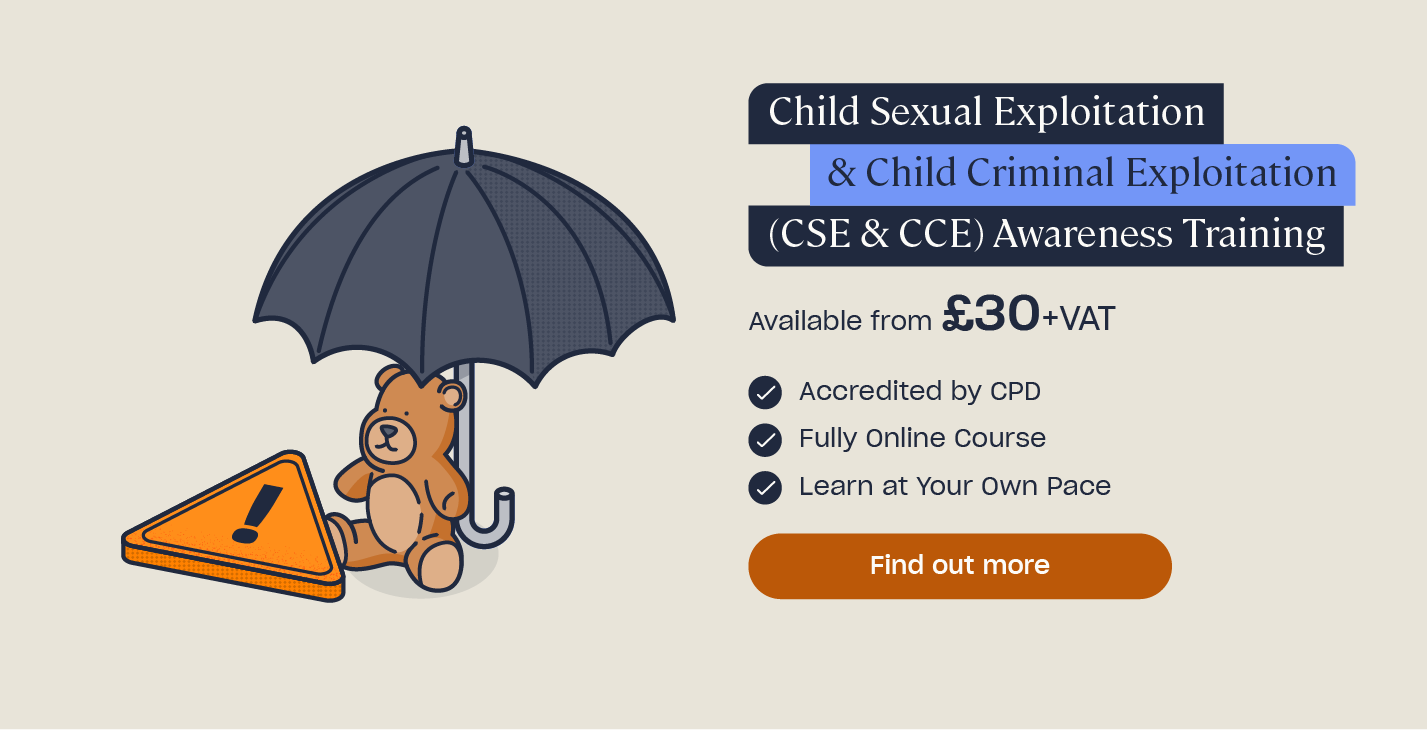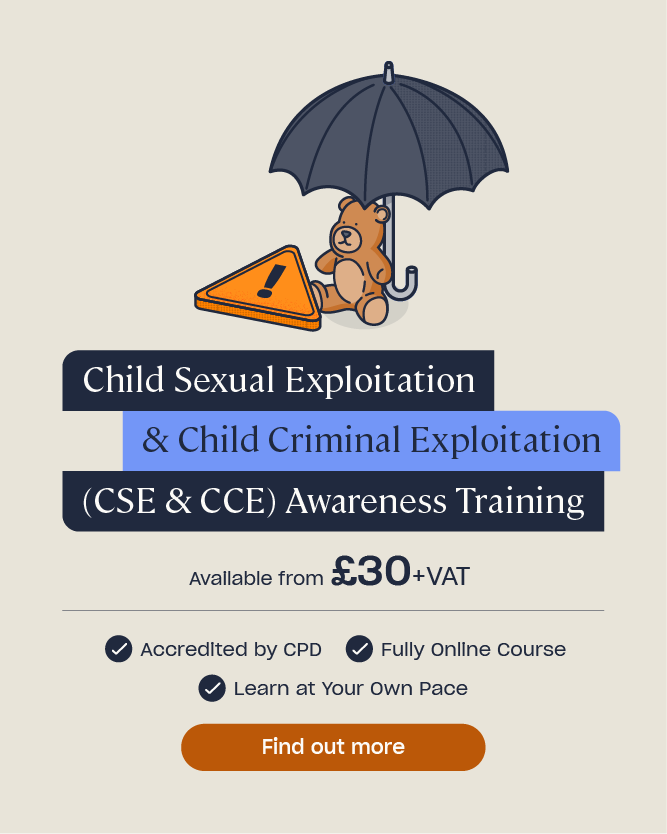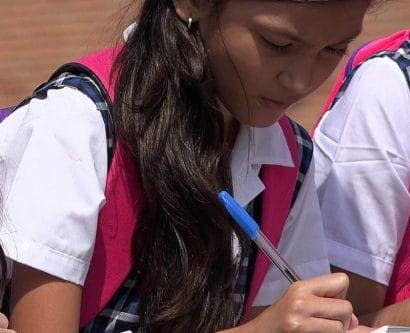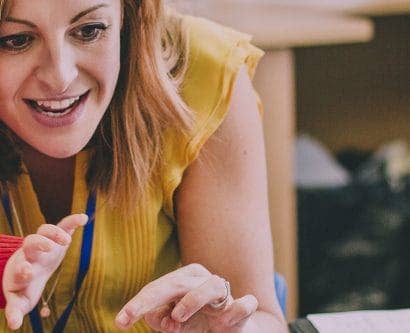How to Teach Children About Healthy Relationships
Relationships are an incredibly important part of a child or young person’s life. Healthy relationships have a lot of benefits, such as making them feel secure and supported, but unhealthy relationships can have a long-term negative impact. As a result, it is vital that children and young people are aware of what an unhealthy – or even abusive – relationship might look like, the early warning signs, and how to maintain healthy boundaries.
In this article, we will outline the characteristics of healthy and unhealthy relationships, and give you some tips for teaching children and young people about this subject in an age-appropriate way.

What is Classed as a Healthy Relationship?
A healthy relationship is made up of the following characteristics:
- Mutual respect. You should value each other as you are, and not try to change each other. This involves respecting each other’s boundaries, whether these are emotional, digital, sexual or other types of boundaries.
- Trust. You should not feel as though someone has to ‘prove’ that they are trustworthy; in healthy relationships, you believe what they have to say. You also don’t worry about what they are doing when you aren’t there.
- Equality. You should make decisions together and hold each other to the same standards. Neither of you should have more control over the other.
- Honesty. In a healthy relationship, you need to be able to be honest with each other. Sharing your feelings should not lead to negative consequences. However, this does not mean that you need to tell each other absolutely everything; you can keep some things private.
- Good communication. You should be able to talk openly about any problems that you have, rather than letting them build up and cause resentment. Communication also involves listening to each other and respecting each other’s opinions, even if you don’t agree. You may sometimes have to compromise so that both people feel valued.
Healthy relationships are inherently positive – children and young people should always feel respected, valued, supported and encouraged. They should also be free to make choices about how they act and what they say; they should not be controlled, coerced or manipulated into anything.
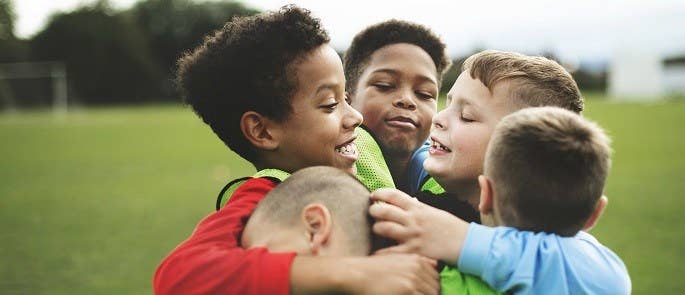
Benefits of healthy relationships include having a positive sense of wellbeing and experiencing less stress. You might also have more purpose to your life and increase your social development.
Why is it Important to Teach Children About Healthy Relationships?
There are four main reasons why it is important to teach children and young people about healthy relationships:
1. Many of them do not understand what a healthy relationship is
The research project Boys to Men found that 49% of boys and 33% of girls aged 13-14 thought that hitting a partner would be ‘okay’ in at least one of twelve scenarios they were presented with. Lack of experience of healthy relationships, as well as peer group norms – adolescents in particular tend to be more accepting of relationship abuse, according to research – leads to children and young people finding it difficult to judge behaviour as abusive. For example, they often view forms of sexual harassment as normal and even inevitable; they might also have been groomed to believe that a relationship is healthy.
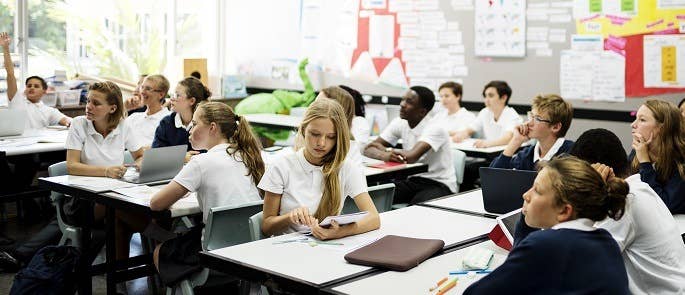
2. They are just as likely, if not more likely, to experience abusive relationships as adults are
A key study showed that 75% of girls and 50% of boys aged 13-17 had experienced some form of emotional relationship abuse, with 25% of girls and 18% of boys experiencing physical abuse, and 1 in 3 girls and 16% of boys experiencing sexual abuse. The transition from childhood to adulthood, with all its associated cognitive and physical changes, is a particularly vulnerable time of life. Barnardo’s has also found that 1 in 6 children experience sexual abuse before their 18th birthday. These negative experiences can have serious outcomes, including depression, decreased cognitive ability, serious harm or suicide.
3. They want to learn about it
Studies have found that young people want to be taught about the emotional aspects of relationships. It is not enough to have sex education alone.
4. Understanding healthy relationships can impact the rest of their lives
If children are taught about healthy relationships early on, this could decrease the likelihood of them staying in unhealthy or abusive relationships later. In turn, the high levels of domestic abuse in adults might drop – in 2019-2020, 2.3 million adults were victims of this sort of abuse. Moreover, healthy relationships can impact lives positively by improving your health, lengthening your life, and advancing your academic career.
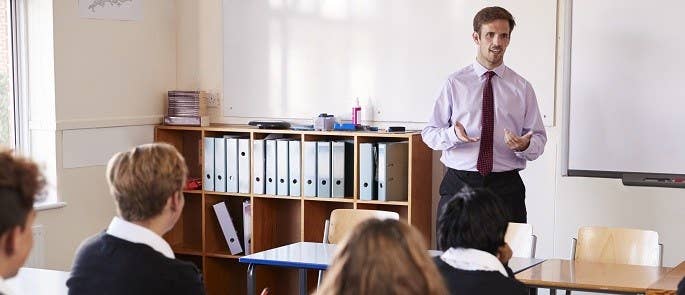
Therefore, giving children and young people the right advice, teaching them healthy attitudes and behaviours, and training them to identify and deal with unhealthy relationships is vital.
Including healthy relationships as part of school curriculum has been shown to be an effective preventative measure against future relationship abuse. By talking about relationships, you also provide children with the opportunity to open up about any experiences of abuse – domestic or otherwise – and get them help to deal with this.
What is Classed as an Unhealthy Relationship?
Where healthy relationships are inherently positive, unhealthy relationships are inherently negative; they are based around an imbalance of power and control. There is a lack of respect; you might be forced or coerced into doing things that you aren’t comfortable with, or behaving in a certain way. You might feel that you aren’t good enough, and experience anxiety, depression, or physical health symptoms such as headaches (Woman’s Aid, 2015).
In an unhealthy relationship, a child or young person might:
- Only spend time with one particular person, and lose contact with their other friends or family.
- Be prevented from working or going to school.
- Have their money taken away or controlled.
- Be restricted in accessing food, drinks, and day-to-day items.
- Have their time controlled or heavily monitored.
- Have their social media accounts controlled or heavily monitored. For example, someone might monitor which posts they ‘like’ and who they have been messaging.
- Be told what to wear.
- Feel pressured to do things they are not comfortable with.
- Be criticised or put down.
- Experience threats of violence if they don’t behave a certain way.
- Be threatened with damage to their personal property, loved ones, or pets.
- Not be able to talk about problems or their feelings without having an argument or being punished for it.
- Lack trust in the relationship – they might be accused of lying or cheating, or might frequently be lied to.
- Have their boundaries disrespected – if they speak up about an issue, they might be told that they’re overreacting, ‘clingy’, or ‘needy’.

Abusive Relationships
Unhealthy behaviours might start off seeming relatively insignificant, but it is important to recognise them because they are often symptomatic of a person trying to exert power and control over you. This could lead to a categorically abusive relationship as they attempt to gain more and more control. This type of relationship involves physical abuse (hitting, slapping, pushing or choking), threats and insults, humiliation, gaslighting, and regularly forcing you to do things you don’t want to do.
Abusive or unhealthy relationships involving children are often exploitative. Exploitation is a complex issue – training will help you to better understand why it happens, who is at risk, and what you can do to help.
Need Exploitation and Safeguarding Training?
Our range of safeguarding training courses aim to provide you with the required knowledge to carry out your work whilst meeting safeguarding training requirements. Take a look at our course library where you’ll find everything from Child Sexual Exploitation Awareness to Harmful Sexual Behaviour in Schools.
Tips for Teaching Healthy Relationship Skills
We have put together 7 tips for teaching healthy relationships in the classroom. These are:
1. Talk about boundaries
Boundaries help to protect children and young people from abuse, as well as helping them build healthy relationships that meet their needs and values. Get children to think about their personal views so they can identify what their boundaries are. In early years, this might be talking about their likes and dislikes in general. For older teenagers it might involve a private reflection activity around their views on sex and when this should or shouldn’t happen in a relationship.
You can then practise articulating boundaries clearly. Young children should be taught that it’s OK to say no if they don’t want to do something – for example, hug a family member or join in with an activity – and that you will respect this. Older children could roleplay scenarios, with one of them reacting when the other oversteps their boundaries. For example, if the other person tries to make fun of them, they should tell them to stop, and if they don’t, they should walk away and tell them that they don’t want to talk while they’re doing that.
Remember to note that both people in a relationship have their own boundaries that need to be respected; students should be able to see it from both sides.

2. Think about how you expect to be treated in a relationship
If children can identify how they would like to be treated and their rights in a relationship, this will make them more alert to unhealthy relationships that don’t meet these criteria. They could make a list of what they expect, with some scaffolding to prompt them. For example, being treated fairly, being respected and supported, being able to say no at any time (even if they’ve said yes before), and being free from violence and abuse are good expectations.
You could also practise recognising that someone is being exploited or abused, and talk about what to do in these situations. Useful resources that include different red-flag scenarios are the NSPCC and Love Is Respect websites. Having group discussions about the healthiness of relationships in books or films could also be an effective teaching tool.
3. Teach them how to communicate effectively
Many people say that communication is key to a healthy relationship. Effective communication involves being able to express your thoughts and feelings, but also being able to listen, understand other people’s points of view, and compromise.
Younger children (5-11 years old) should be helped to resolve conflicts; encourage them to think about how other people are affected by their actions. You could also practise expressing opinions in different ways; show them how changing your words can change how you make someone feel. For example, making statements with the words ‘I’ and ‘we’ rather than ‘you’ can make the other person feel less defensive.
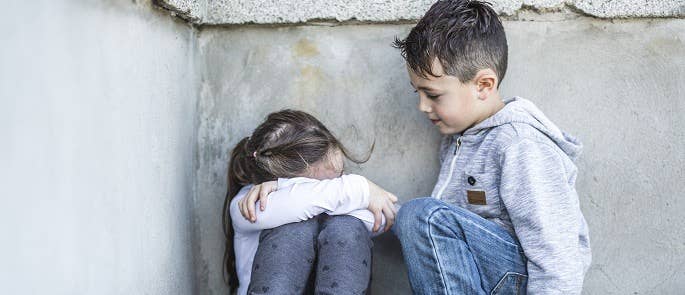
Older children and young people could think about:
- How they feel in different situations, and ways that they could react that would be positive and non-violent – for example, going for a walk when they feel angry so they calm down and think about what’s wrong. You could roleplay talking about feelings using scaffolded sentences, such as ‘when (someone) did (action), I felt angry because…’. Jealousy is another important emotion; emphasise that it’s normal to feel jealous, but that doesn’t mean you need to act on it. Telling someone not to talk to a certain person because you feel jealous is unhealthy.
- Compromising when you disagree. Talk about how it’s important to find a middle ground that both people are satisfied with. Point out that you don’t need to agree on everything, but if you can’t compromise on an important issue then you may not be compatible.
- The 48 hour rule: if your partner upsets you or makes you angry, you should tell them about it, but it doesn’t have to be straight away. See if you’re still hurt 48 hours later, and if so, say something.
4. Don’t forget digital abuse
This is particularly important now that young people spend a large amount of time connecting with each other online.
It may be difficult for young people to know what is normal in terms of online behaviour, because some adults don’t understand how technology is used, nor give them relevant guidance. For example, young people should be told that it’s not normal or healthy to ask a partner to share their password to social media accounts with you, or to go through their messages to check who they’ve been talking to. Other harassment that can occur through technology includes constant unwanted calls or texts, cyberbullying, pressure to sext, and being monitored through social media.

Responses to digital abuse should not simply be to ‘turn the phone off’ or ‘delete their account’. It’s much better to advise children to report abuse on the site, screenshot any upsetting messages to keep as evidence in case it escalates further, or to set their profiles to ‘private’ so that strangers can’t see where they live or go to school.
You could take our course in Online Safety & Harms if it would help you to feel more confident in this area. You can also read our article: How Can You Keep Your Child Safe Online?.
5. Debunk stereotypes
Stereotypes can lead to unhealthy relationship expectations and abuse – for example, if people are punished for not acting the way they’re ‘supposed’ to. As a result, it’s important that you avoid stereotyping from children’s earliest years right the way through; embrace individuality, encourage boys and girls to play alongside each other, and always challenge gender stereotypes when you hear children repeating them. Adolescents might be particularly susceptible to stereotyping; try to make them aware of how this can be harmful and unhelpful.
Additionally, make it clear that unhealthy relationships and abuse can happen to – or be perpetrated by – anyone, regardless of their age, race, gender, sexual orientation or background. Accepting that this is true can help victims in all different situations to feel comfortable speaking out.
Have a look at Outspoken Education for more tips about discussing stereotypes and other tricky topics to do with sex and relationships. You could signpost parents to this website to aid their conversations at home.

6. Make sure they know where to go if they have problems
Make it clear that you’re available to talk if anyone has a concern, but also signpost students to websites and helplines such as Childline (0800 1111 – free to phone) and Stop It Now! (0808 1000 900).
Children and young people should know that they will be listened to and not judged. They should access these resources – or talk to a teacher or other trusted adult – if they ever feel uncomfortable or concerned about a relationship. Spread the word amongst your colleagues so that they are also aware of the warning signs of unhealthy or abusive relationships, and the possible consequences that they can have.
7. Report any concerns as usual
If you think a child or young person is in immediate danger, phone the police on 999. If you are worried, but you don’t think they are in immediate danger, follow your safeguarding policy. Talk to your school’s Designated Safeguarding Lead or contact your local child protection services (details will be on your local authority website). Unhealthy and abusive relationships are a child protection concern and should always be treated seriously.
Relationships can have a huge impact on children and young people’s lives; it’s important to give them the tools they need to build healthy ones and recognise warning signs. Teaching about healthy relationships could decrease the levels of child exploitation and domestic abuse, and improve your students’ wellbeing and futures.
Further Resources:
- Child Sexual Exploitation Awareness Training
- Child Safeguarding Quiz
- What is Contextual Safeguarding & Why is it Important?
- What is the Toxic Trio?
- Child Sexual Abuse: Guidance for Schools
- What are the Emotional Needs of a Child?
- Social Skills in Children
- How to Help a Child with Depression


